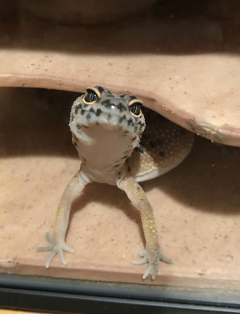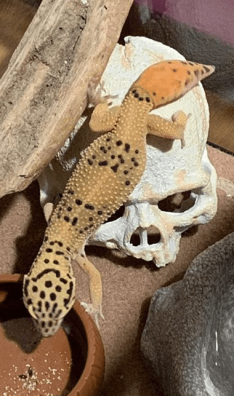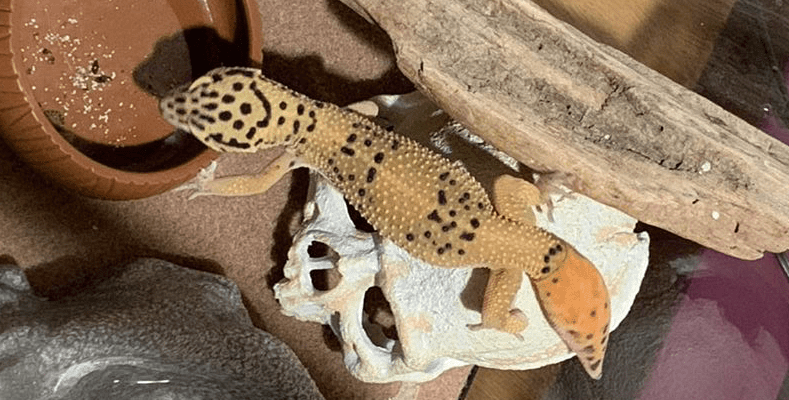A fascinating fact about leopard geckos is that they have evolved to be able to lose and regrow their tails as a form of defence. But why does this happen, and what should you do if it happens to your leopard gecko?

Biologists have thought for a long time that this ability is a defence mechanism for many small lizards, to enable the lizards to escape from predators. Leopard geckos have evolved to use their tails as a defence in two ways:
They can detach their tails from their bodies if it is grabbed by a predator.
Unfortunately they will lose their tail (which is where they store their excess fat and energy reserves) however their bodies should hopefully be able to scurry away, unscathed, and then over time they can regenerate the lost tail and restore their fat reserves.
This mechanism could also quickly stop poison spreading throughout their bodies if they are caught and bitten by a venomous creature such as a snake.
If they feel threatened, or unsafe, they will use the tail as a decoy.
In the first instance they may wiggle or flick their tail, in the hopes that this will distract a predator; making the predator more likely to grab the tail over their body. Failing this, the gecko can preemptively drop their tail, and it will spasm and writhe around on the floor for several minutes after the gecko has escaped.
Again, this is to distract a predator, and give the gecko the highest possible chance of survival, keeping its body and vital organs intact.
The tail will regenerate, however the appearance will be different to before.
It is likely to look different in a few of the following ways:

- More thick/ bulky/ bulbous looking
- Less uniform in terms of thickness
- Smoother, without the raised spots
- Different in colour/ pattern
- Shorter
So, what does this mean for you as a leopard gecko owner?
Well, even though you realise you are not a threat to your leopard gecko, they may not understand this. It’s important to look out for signs that your gecko feels stressed or under threat, and try to avoid them dropping their tails at all in the first place.
It is also important to make sure that their enclosure is safe, with nowhere their tails could become trapped, and making sure that your geckos are not cohabiting.
See: Signs that your leopard gecko feels threatened and Is it safe to cohabit leopard geckos?
Unfortunately, sometimes geckos will lose their tails, through no fault of the owner or completely by accident, so my next post will discuss what to do if your leopard gecko loses its tail…
See: What to do if your leopard gecko loses its tail
Get Your Free Leopard Gecko Care Checklist!
Are you ready to give your leopard gecko the best care possible? Download our FREE PDF e-book featuring a comprehensive care checklist!
This handy guide covers everything from habitat setup to feeding and health tips, ensuring your gecko thrives.
👉 Download your checklist now!




